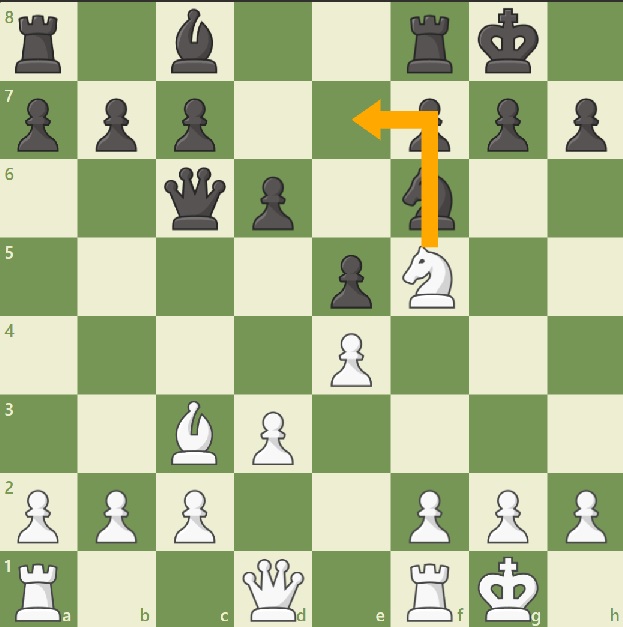
Fork involves attacking two pieces at the same time with one of your pieces. Only one of the opponent's pieces can move at a time so you can capture the piece that didn't move. Knights are the most common forking piece.

|
Fork involves attacking two pieces at the same time with one of your pieces. Only one of the opponent's pieces can move at a time so you can capture the piece that didn't move. Knights are the most common forking piece. |
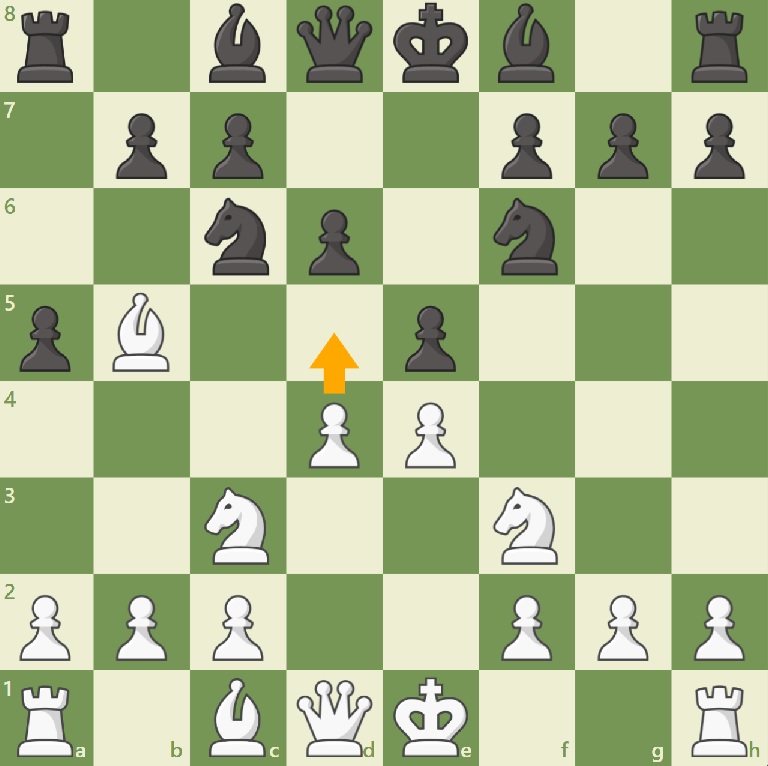
|
A pin is when you attack a piece but the piece cannot move without exposing a more valuable piece behind it. The pinned piece can then be attacked by a less valuable piece, like a pawn, or more attackers can be added until the pinned piece cannot be defended anymore. piece. |
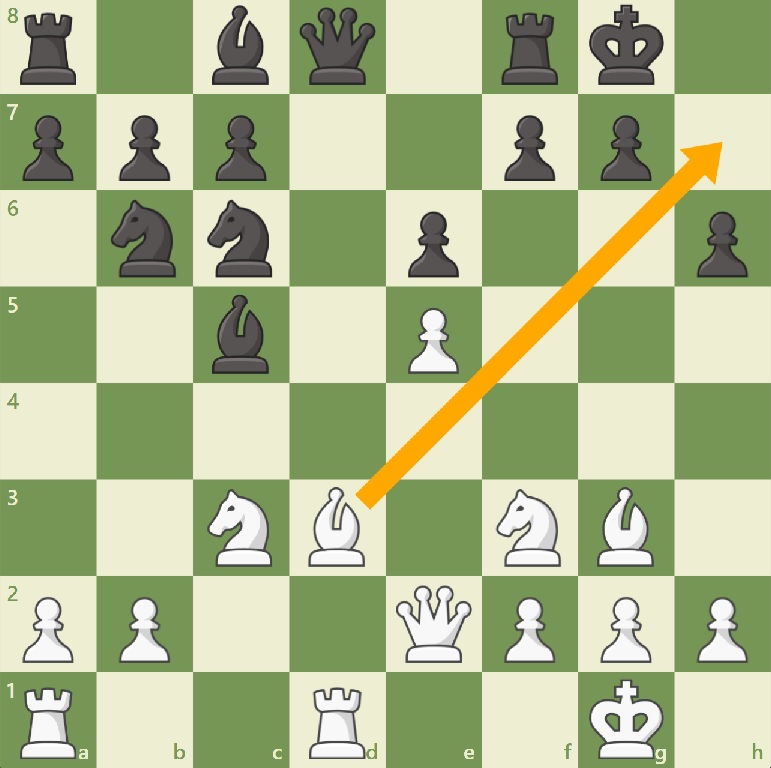
|
A discovered attack is when one piece that is blocking another moves so that both pieces are threatening the opponent. In a discovered attack, the piece that is initially blocked does not check the king, but in a discovered check, it does. |
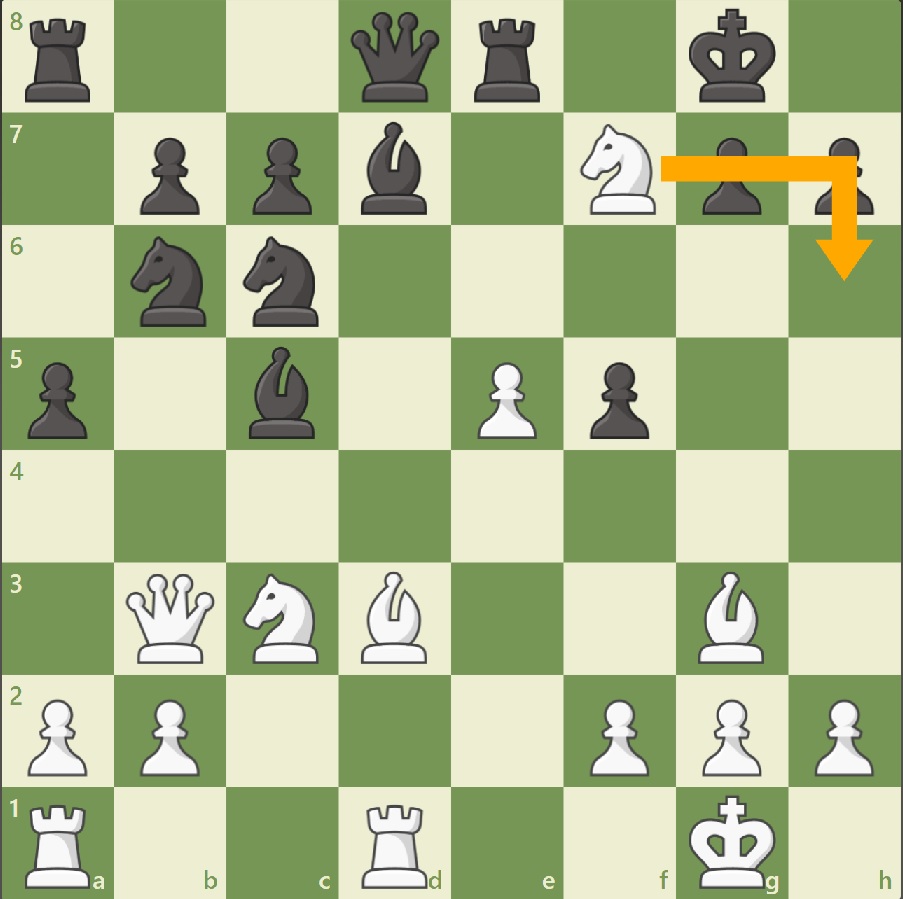
|
In a double check, both the piece that moves and the piece that is uncovered give check. This prevents your opponent from blocking the check or taking one of the pieces giving check because there would still be the other piece giving check. The only way to get out of it is to move the king. |
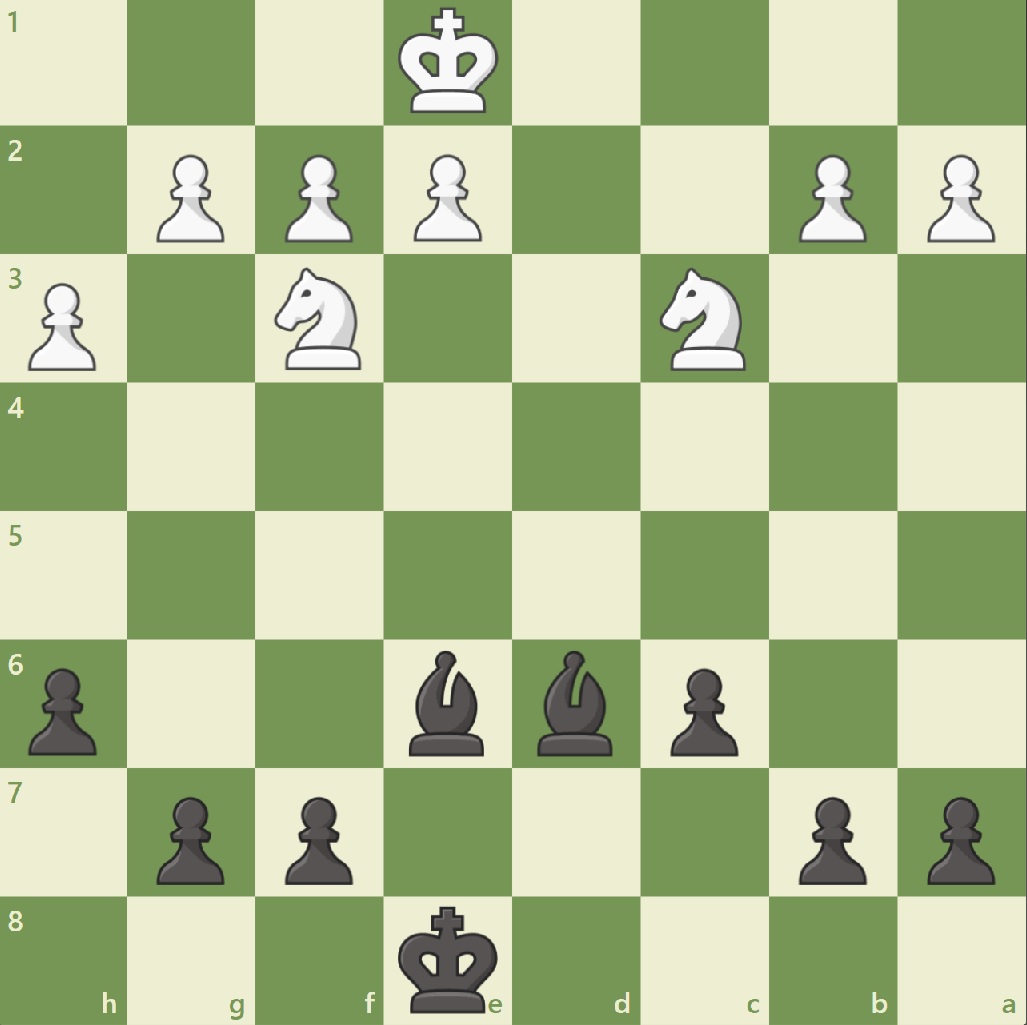
|
The bishop pair is a strategic concept. . The bishops are able to control many squares on both colors . This advantage is useful in the middlegame but is most pronounced in the endgame such as in the example position. |
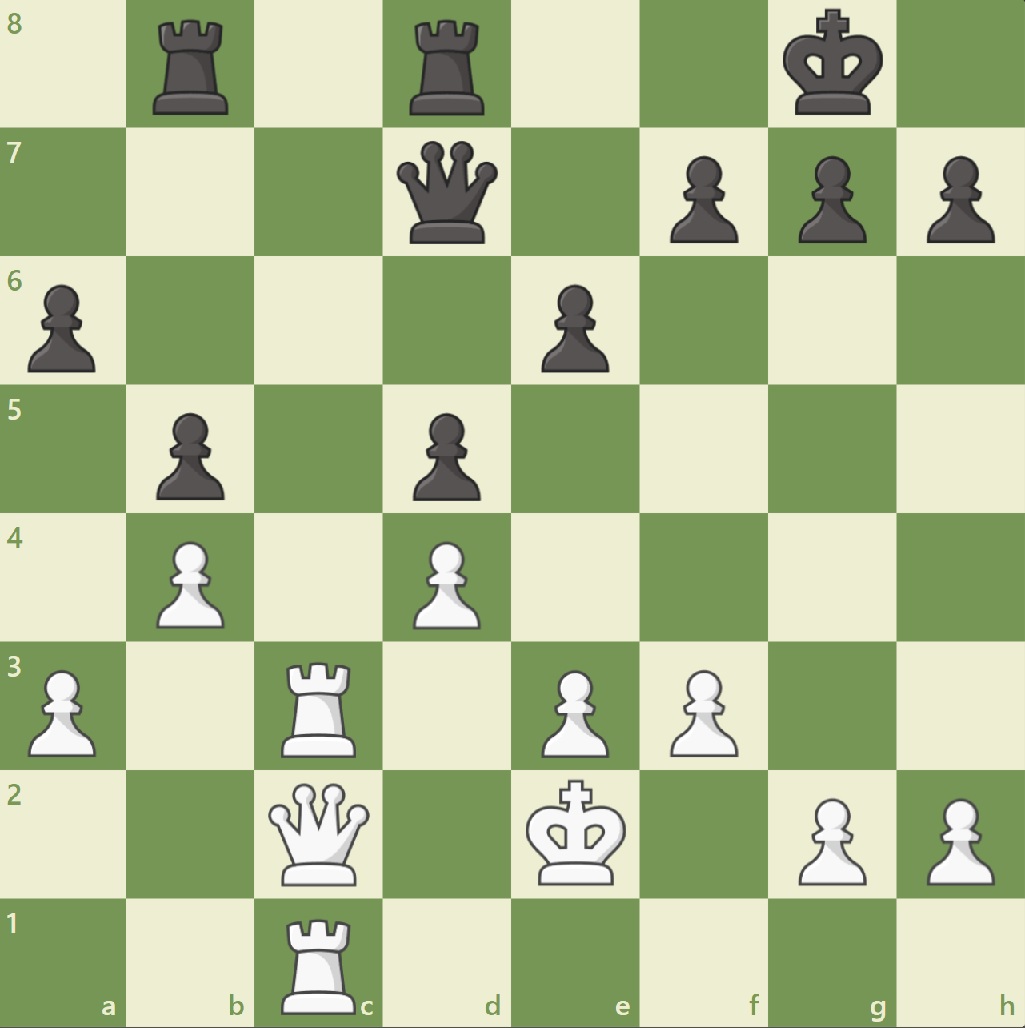
|
An open file is a file with no pawns on it.You can gain control of an open file by placing a rook at your end of it. The benefit of controlling the open file is that you can move your major pieces into your opponent's side of the board to attack their pieces and pawns. |
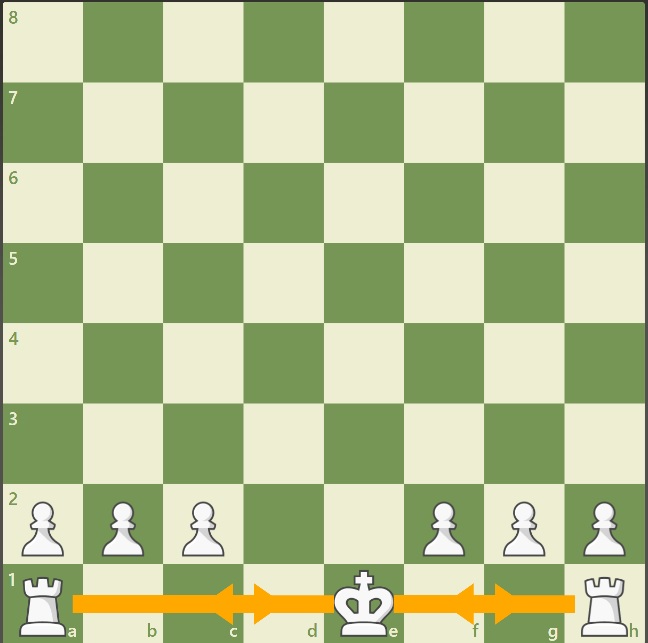
|
Rooks play a part in an important special move along with the king: castling. You can castle either to the kingside or the queenside. In order to castle, a few conditions must be met. First, you cannot be in check. Second, your king and whichever rook you castle with must not have moved during the entire game up to that point. Third, there must be no pieces in between the king and castling rook. In addition, you cannot "castle through check" which means that no enemy piece can be threatening either of the two squares that the king moves through. Castling is a very important move which is played by both sides in the vast majority of games. It gets your king to safety on the side of the board and centralizes a rook at the same time. |
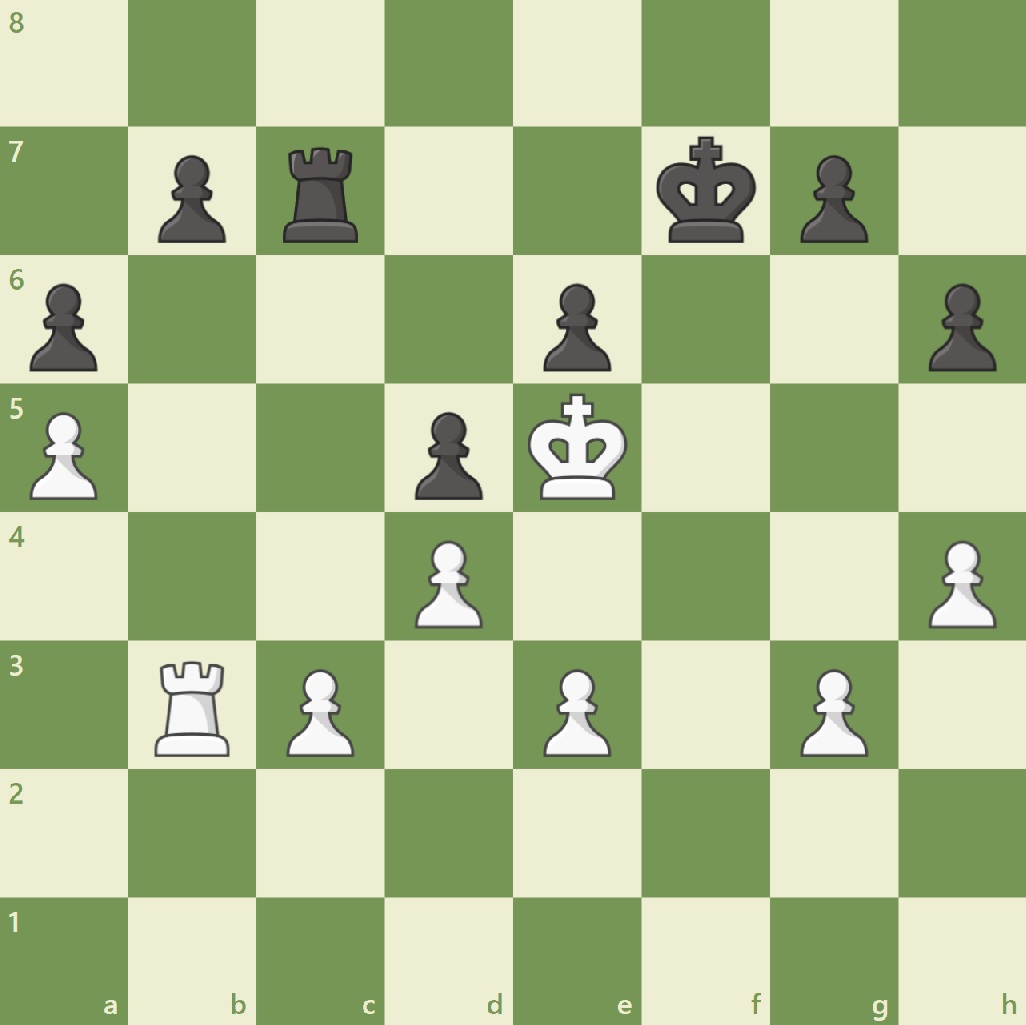
|
In the endgame, especially if each side only has a rook or minor pieces, king activity is very important. The king becomes an important attacking piece and king activity can be the difference between victory and defeat. |